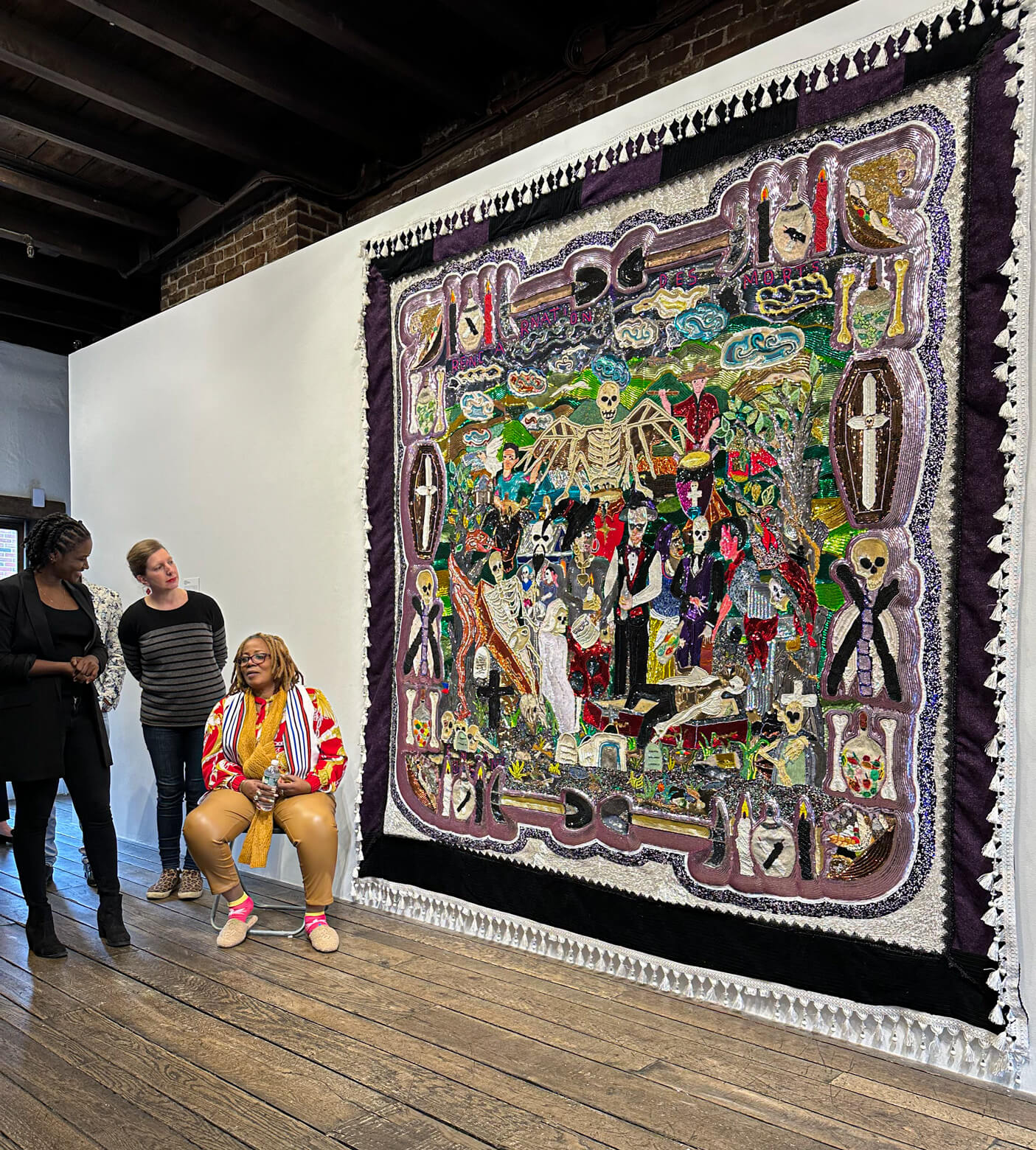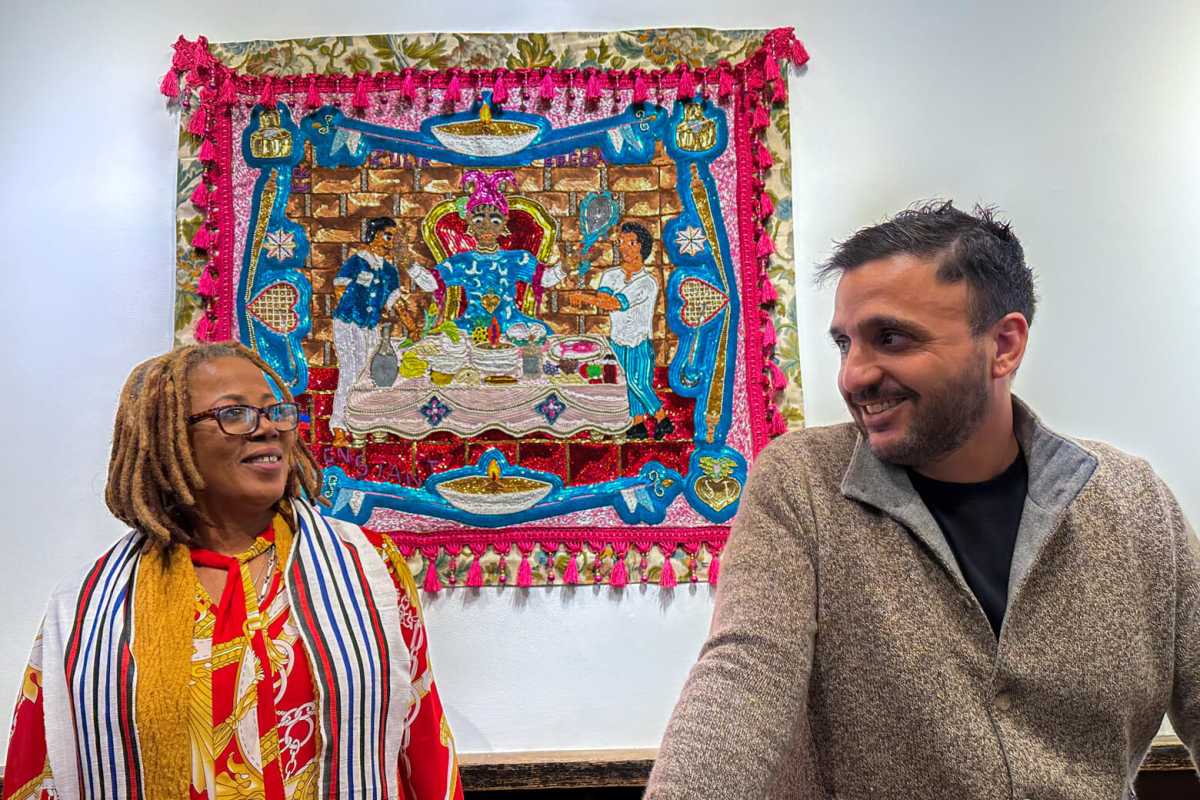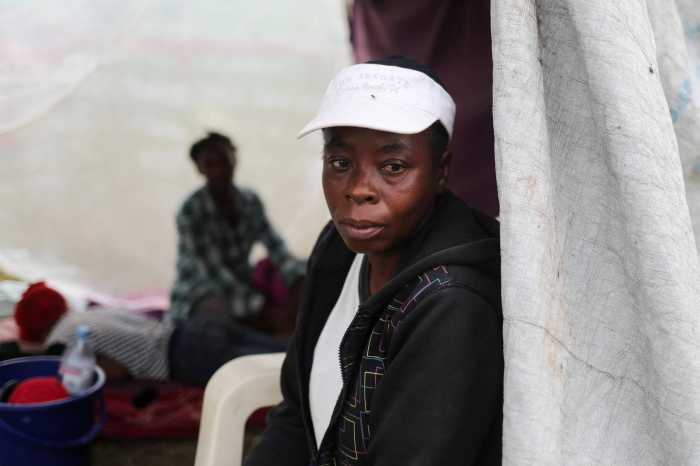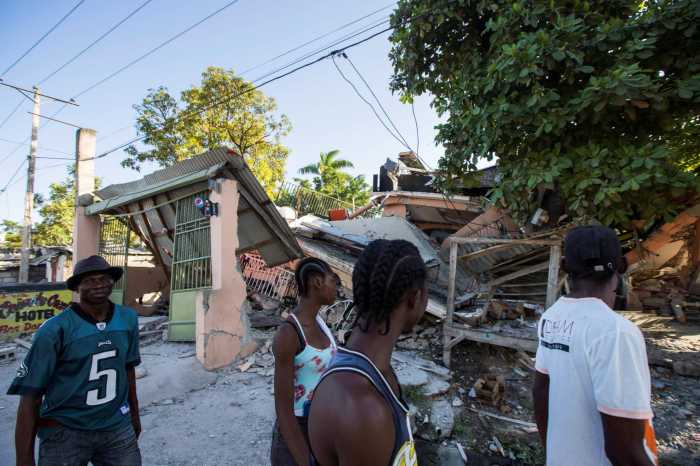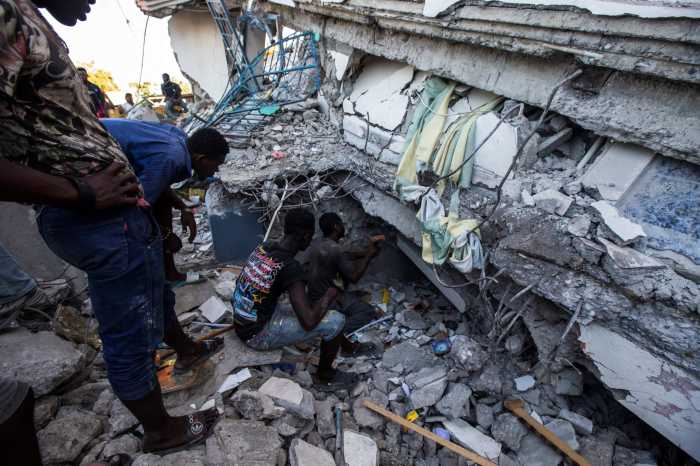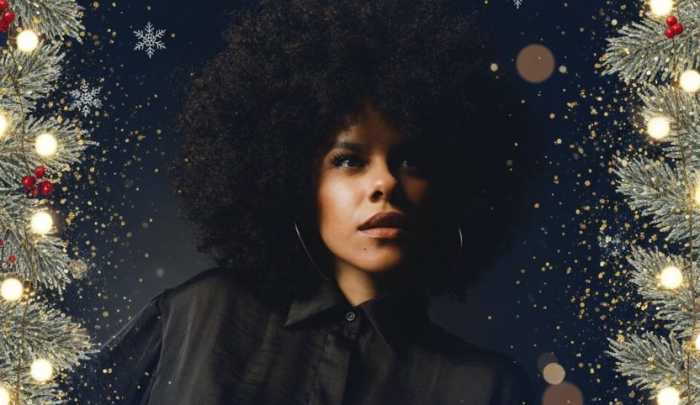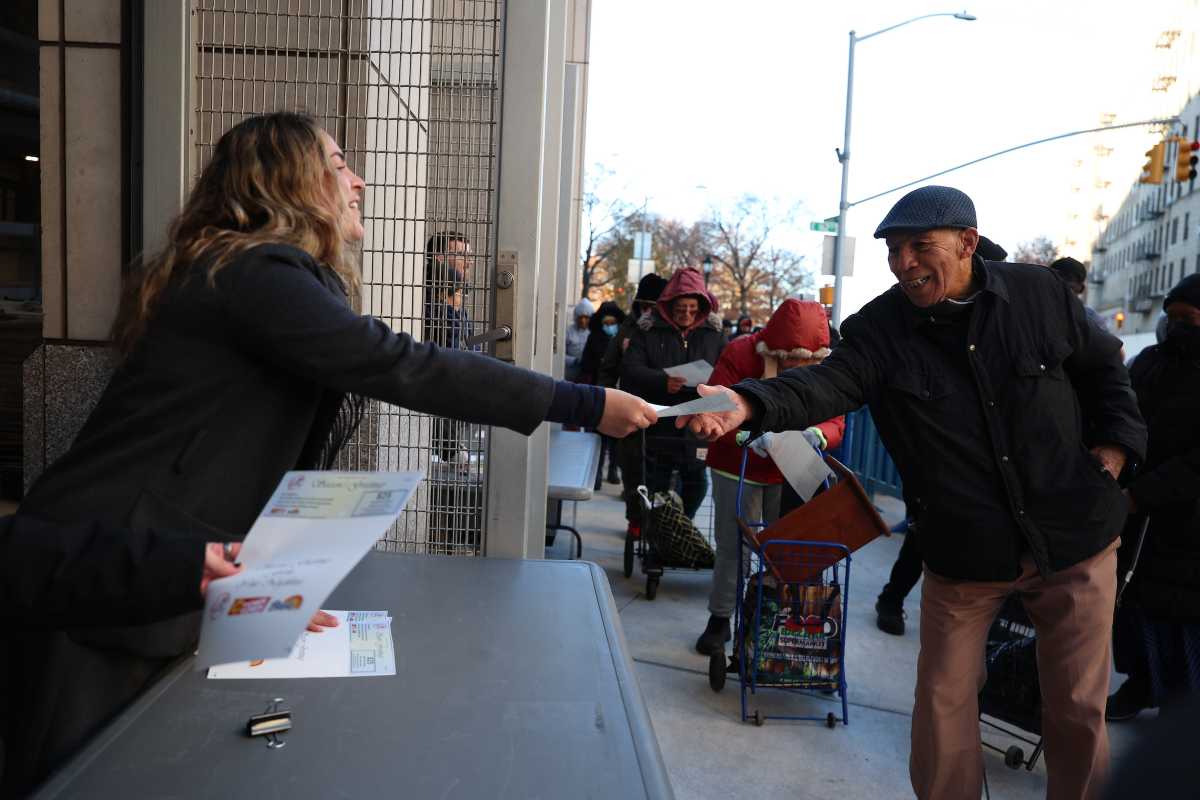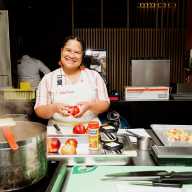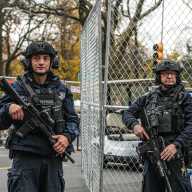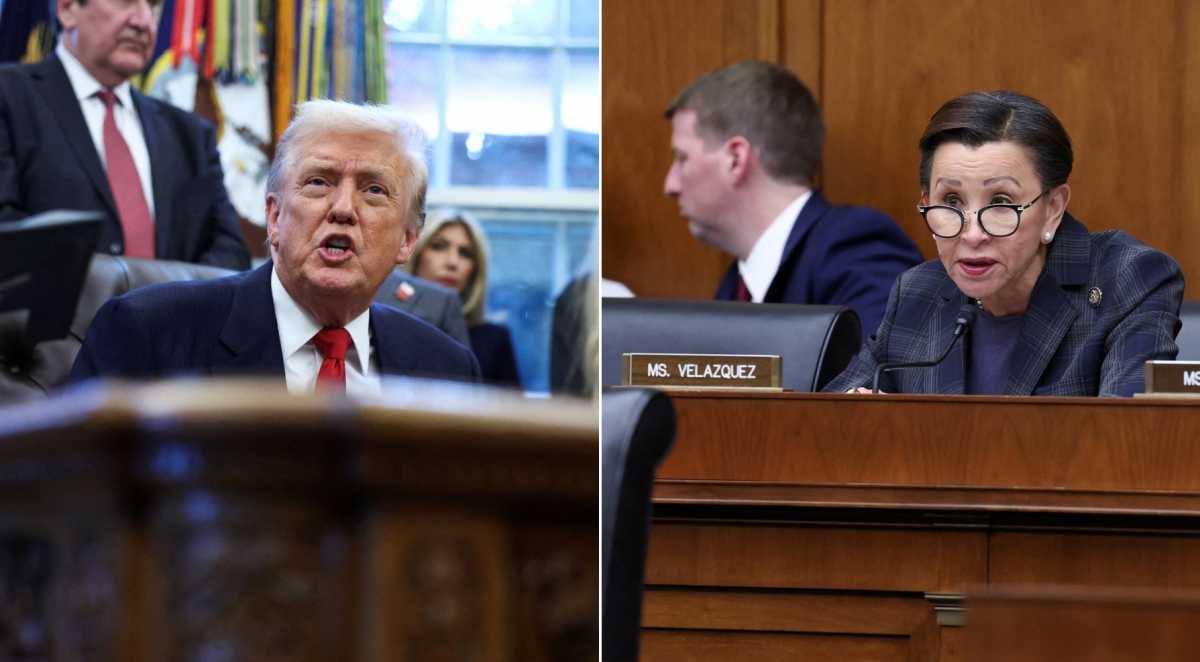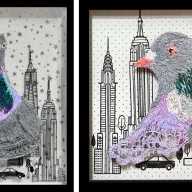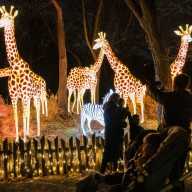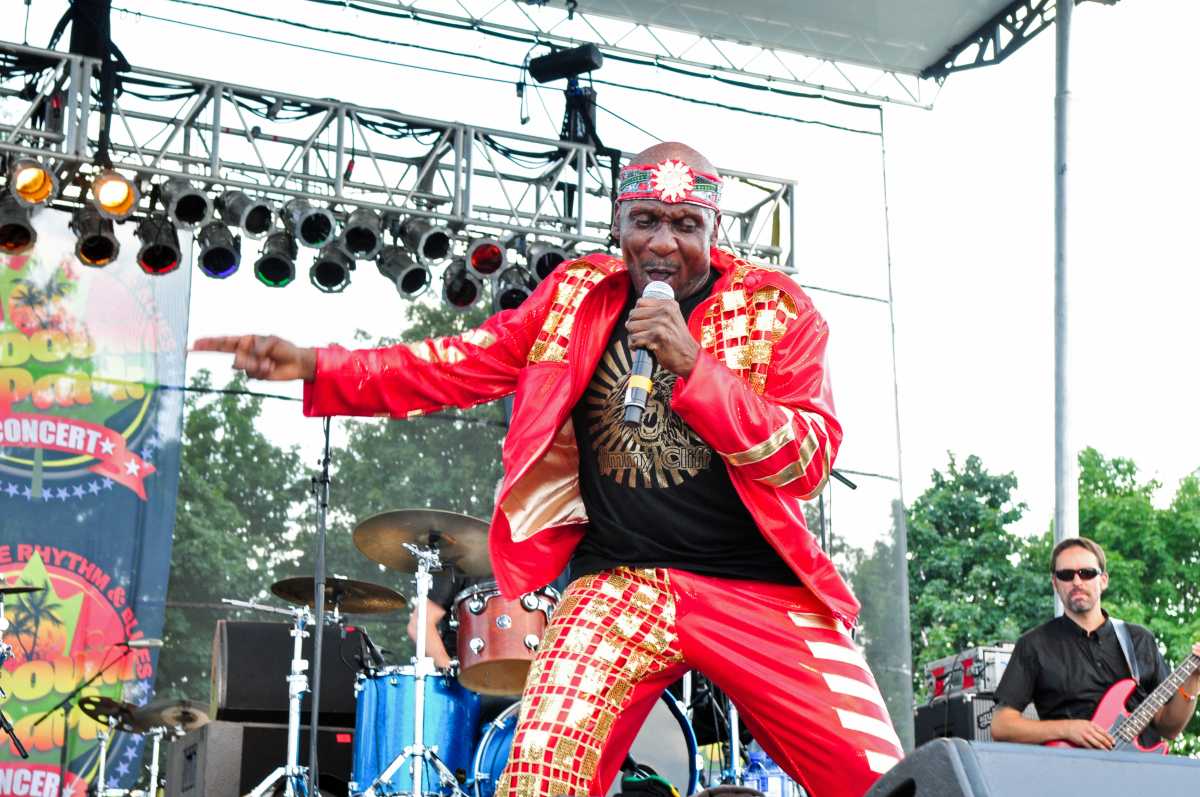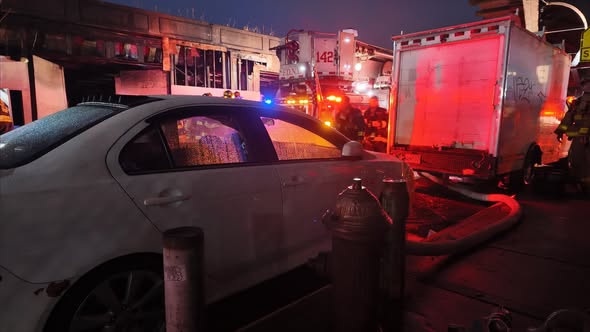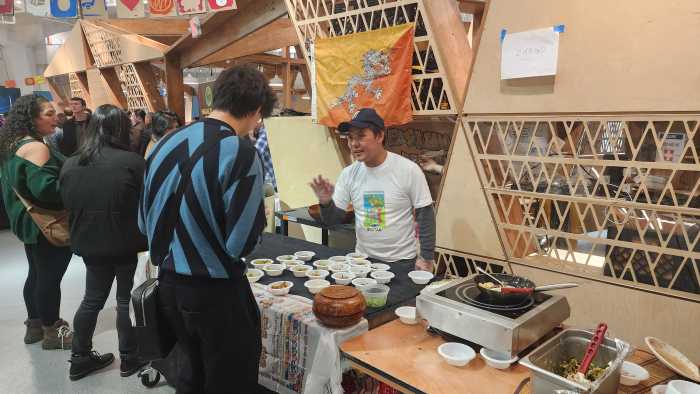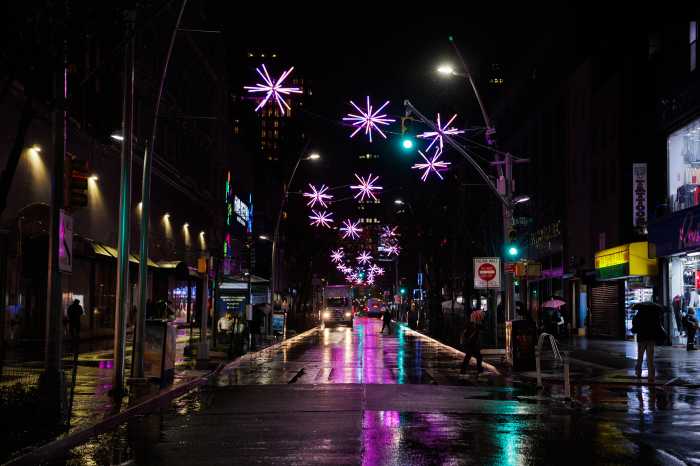Myrlande Constant recalls she and her mother sheltering from Haiti’s afternoon sun and heat, under a frame with fabric from the wedding dress her mother was beading. This is one of the earlier memories along Myrlande’s path in becoming the international artist she now is.
The artist employs the highly skilled beading techniques she once worked with in a wedding dress factory, mastery has passed from mother to daughter.
Myrlande’s art evolved from her early years when her beaded banners, drapo, challenged at that time the typical techniques utilized in the male-only art form in Haiti. Those drapo, when depicting a Vodou god, lwa, totally covered fabric using sequins and tiny seed beads.
Upon leaving her factory job in the early 1990s, Myrlande created drapos distinctively only using beads. Early works were two- to three-foot square—each drapo portraying one Vodou-inspired god accompanied by a graphic-designs—a veve— that signifies a particular god.
She sold one of her first drapo to Richard Morse at the Oloffson Hotel in Haiti.
Over the years, numerous representatives of Haitian art carried and continue to carry her work. And, as her art has evolved, her drapo have grown in size and complexity.
The Haiti-based artist has exhibited in Miami and one of her elaborate tapestry of images, a 5 ½ by 8-foot drapo— nine years in the making— was included in the 2018 Brooklyn Pioneer Works exhibition PÒTOPRENS.
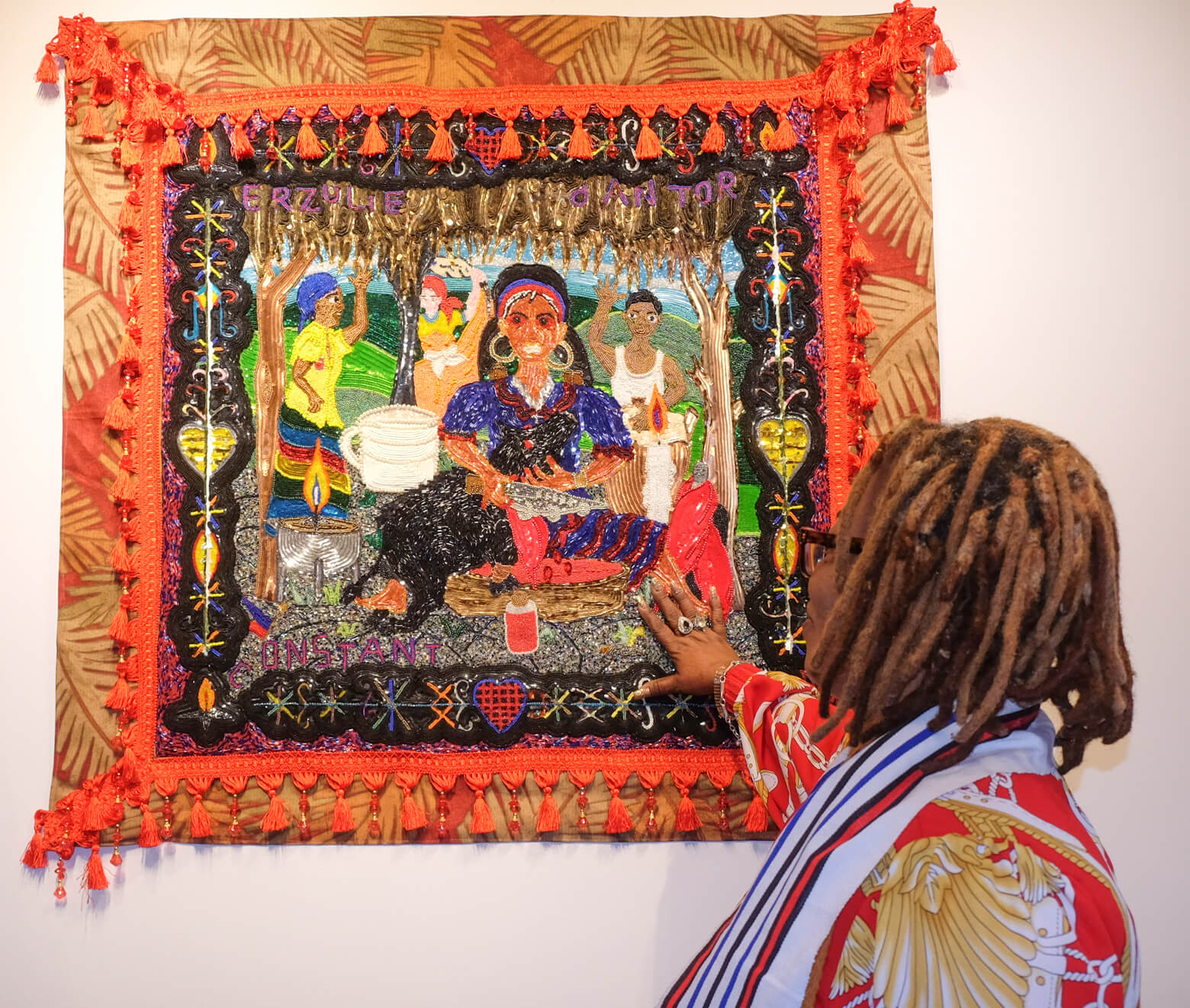
During the pandemic, from the internet, founder of Fort Gansevoort Gallery Adam Shopkin became intrigued by her work and began working with her. The result is the current exhibition Myrlande Constant: Drapo at Fort Gansevoort Gallery, which runs until March 11.
Fort Gansevoort’s three floors of exposed brick walls are a perfect backdrop for showing ten drapo of varying sizes—roughly 2-foot square to monumental. The gallery’s second floor exhibits only two drapo. From her simpler works the artist has expanded to creating immense narrative textiles. Myrlande’s heritage hand-beading techniques and sequin embroidered textiles are used to mingle both contemporary and tradition themes.
On the second floor, Apres Gran Met La Fey Nan Bra Se Treatment Yo Viy (After God, the leaves of trees in the forest are life’s medicine, 6½’ x 9’) features grouping of gods from the Haitian Vodou pantheon.
The all-seeing eye of the Gran Met, (the primary creator of the religion) peers out from a tree trunk. Snakes coil around the tree representing the spirits from the religion’s creation myth, the Haitian gods Danbala and Ayida Wedo. Verdant hills in the background continue the origin story.
On this drapo, Myrlande’s Vodou narrative is supplemented by images she adds along the border—the repeated mortar and pestle are symbols of meal-making, fruits and vegetables symbolize the harvest.
Constant’s early works were similar to other art flags with finished borders. These newer works, however, are edged with tassels, harking back to the traditional drapo used in ceremonies, and the tassels augment beaded imaged borders and patterned fabric borders.
The other drapo on the gallery’s second floor is the bead-and-sequin-on-fabric, 5 ½ x 8-foot banner dedicated to the Haitian farming spirit god Kouzen Zaka. The title is literally Minis Agrikilti, Minister of Agriculture. On this narrative tapestry, Kouzen is rendered in many different dispositions; the whole is framed by red tassels.
Other drapo in this exhibition feature the Vodou spirits Saint Patrick (Damballa Wedo), Erzulie Freda, and Erzulie Dantor.
Constant works with those she’s trained in her technique including family members, which explains how she can create such monumental pieces. Very exacting as to the beads and other embellishments she uses, she scours local sources for reserves.
The exhibition’s Reincarnation Des Morts (Reincarnation of the Dead) is her most monumental measuring roughly 9-foot square. Constant said it took 16 people two months to create it. Seeing an exhibition in this gallery allows the viewer to get up close and personal with the image and technique details of these complex textiles.
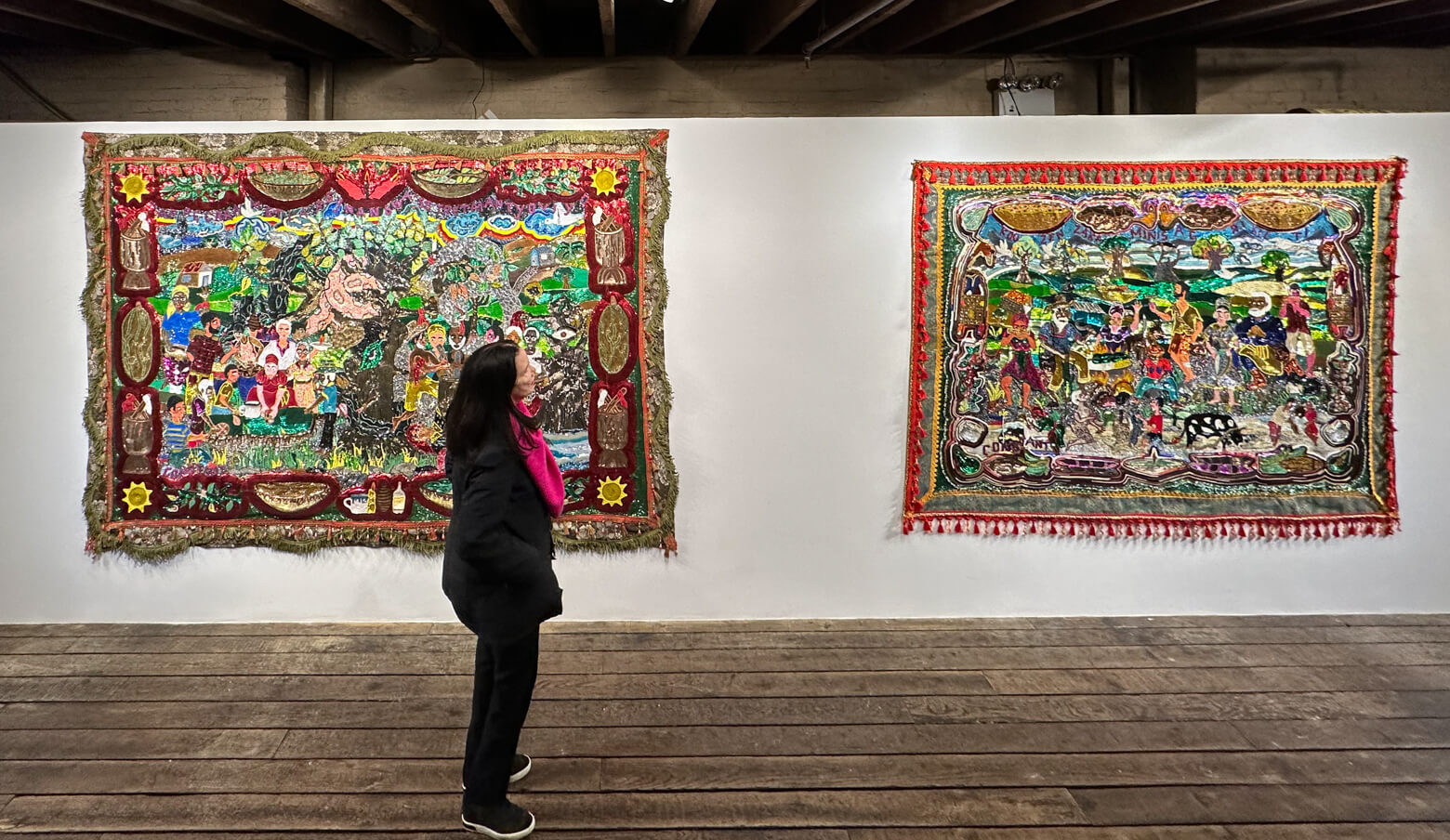
On viewing this exhibit, Soho resident Rick Hill said, “I was overwhelmed by the vibrant detail and the intricate beadwork depicting these Vodou images,” This is the first time he has experienced both these techniques and Vodou subject matter.
Artist Veronique Leriche Fischetti found herself reconnecting with an old friend. Fischetti worked at the Oloffson Hotel 30 years back and is an early collector of Mrylande’s work, impressed by Myrlande’s mastery of both art and business.
“Some of her children and friends also work for her—she taught them as teacher, how to do the work. She puts 100 percent in the work,” Fischetti explains.
Last year, Myrlande was showcased in the Venice Biennale exhibition The Milk of Dreams.
Fischetti adds, “I am so happy for her to get recognized in the art world, in Haiti and also internationally. I wish her good luck to keep growing and continue to make more students. Bravissimo my friend artist Myrlande.” Myrlande has created her own style and trains many to carry on.
Followers of Myrlande Constant and Haitian art are looking forward to the upcoming a survey exhibition, Myrlande Constant: The Work of Radiance at the Fowler Museum in Los Angeles.
The first U. S. Museum exhibition devoted to a female Haitian artist opens on March 26, 2023.
Fort Gansevoort Gallery is in the meatpacking district at the junction where Greenwich St becomes 9th Avenue. Across from cobblestoned Ganesvoort Plaza, housed in a 19th-century house between Ganesvoort and Little West 12th, the gallery is at 5 9th Ave. gallery.
Founded in 2015, this gallery shows the most unusual art. Accomplished, over-looked talent, Black, Indigenous, often considered “outsider” art is what’s hung on the brick walls of this intimate, rustic, 3-floor, exhibition space.
